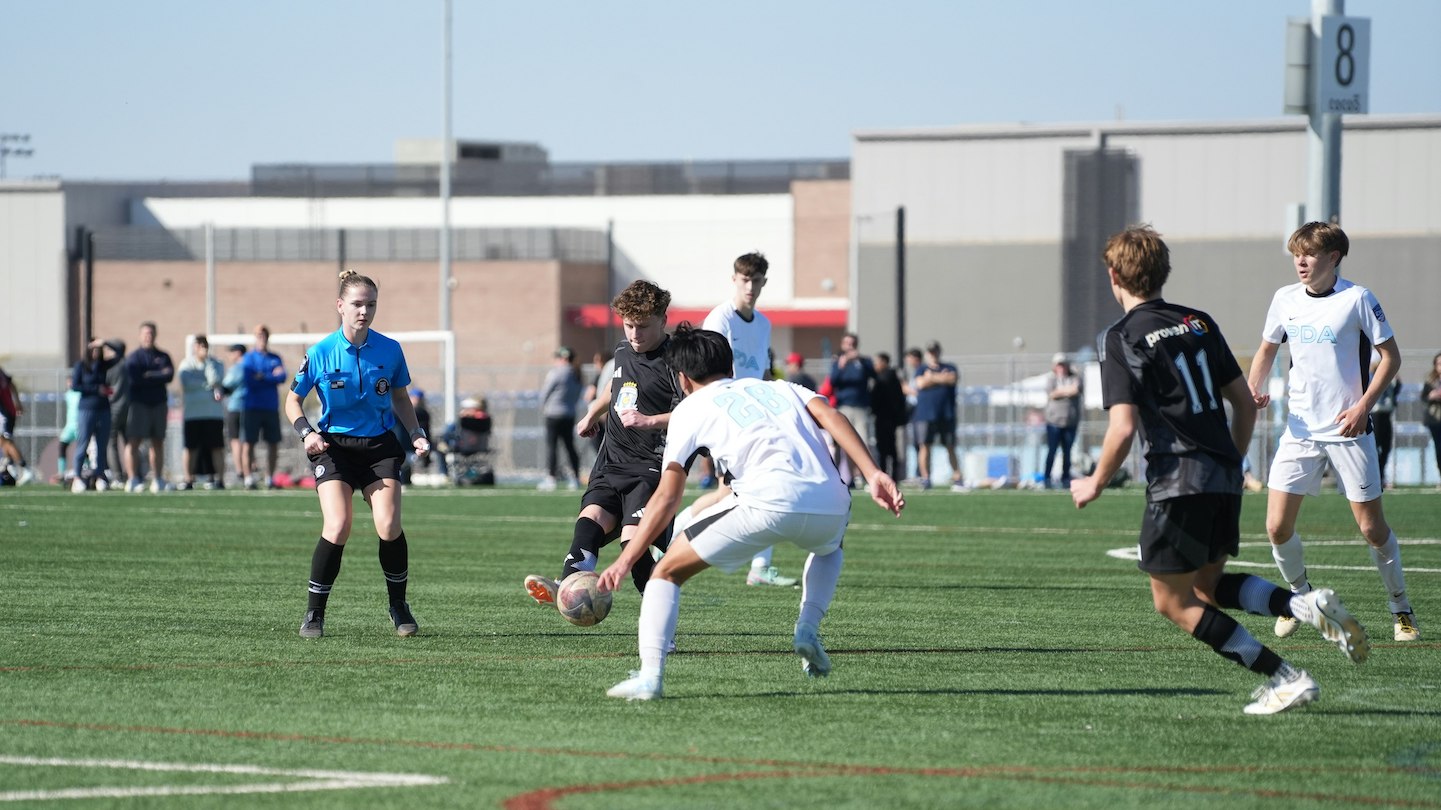College soccer recruitment is a game of inches. Two players with similar technical skills step onto the field, but only one catches the scout’s eye in the 89th minute when they’re still making explosive runs while their opponent fades. The difference isn’t always talent, training, or even genetics—it’s often what happened at the breakfast table that morning.
The Invisible Performance Gap
When parents and players think about soccer development, they focus on the visible elements: private coaching, elite club teams, expensive camps, and the latest cleats. Meanwhile, the most critical factor for athletic performance sits quietly in their kitchen pantry, largely ignored because its impact doesn’t show up on a scale.
Youth soccer players are burning through 2,500-4,000 calories during training days, yet many are operating on nutritional fumes. They’re asking their bodies to perform like Formula 1 race cars while filling the tank with regular unleaded gas. The result? A performance ceiling that no amount of technical training can break through.
Why the Scale Lies About Soccer Performance
The misconception that nutrition is primarily about weight management has created a blind spot in youth soccer development. Parents see a lean, athletic-looking player and assume nutrition is handled. But optimal soccer performance requires a complex orchestration of micronutrients, timing, and fuel quality that has nothing to do with appearance.
A player might look fit while operating with chronic magnesium deficiency, impacting their ability to generate power in the final third. They could appear healthy while maintaining inadequate glycogen stores, leaving them mentally foggy during crucial decision-making moments.
The scale doesn’t measure these performance-limiting factors.
The Hidden Deficiencies Sabotaging Recruitment
College scouts aren’t just evaluating current ability—they’re projecting which players will thrive under the increased physical and mental demands of collegiate soccer. Players with hidden nutritional deficiencies hit performance walls that become glaringly obvious during high-stakes moments.
Iron deficiency affects up to 25% of teenage athletes, reducing oxygen delivery to muscles. The player who seems to “lack fight” in the second half might actually be fighting an uphill battle against compromised oxygen transport.
Inadequate protein intake limits recovery between training sessions. While one player bounces back from Tuesday’s practice ready to dominate Thursday’s scrimmage, their nutritionally deficient teammate is still nursing micro-tears and accumulated fatigue.
Electrolyte imbalances turn the final 20 minutes of games into survival mode rather than opportunity windows. The recruited player maintains precise touches and explosive movements when others are cramping or mentally checking out.
The Compound Effect of Small Margins
Soccer recruitment often comes down to moments of separation. The cross that finds its target instead of sailing over. The tackle that wins possession in the attacking third. The sprint that beats a defender to a through ball. These moments require the convergence of technical skill, tactical awareness, and optimal physiological function.
A player with adequate potassium stores maintains precise muscle contractions throughout the match. Their magnesium-sufficient teammate avoids the muscle tension that slightly misdirects shots. Meanwhile, the player operating on poor nutrition might execute the same skill with 85% efficiency—close enough to look competent, but not quite sharp enough to separate themselves from the pack.
The Mental Game’s Nutritional Foundation
College scouts evaluate decision-making under pressure as much as physical ability. The brain consumes 20% of daily calories and is particularly sensitive to blood sugar fluctuations and nutrient availability. Players with stable blood sugar make better decisions in the 88th minute. Those with adequate B-vitamin intake maintain focus during complex tactical situations.
The recruited player who “sees the game differently” might simply have a brain operating with optimal fuel. Their ability to spot the killer pass or make the right defensive read isn’t just about soccer IQ—it’s about neurological function supported by consistent, quality nutrition.
Recovery: The Hidden Training Session
While parents invest thousands in additional training, many overlook the most important “training session” of all: recovery. Proper post-exercise nutrition triggers adaptations that make all other training more effective. The player who optimizes their recovery nutrition gets exponentially more benefit from the same training load.
The recruited player isn’t necessarily training more hours—they’re getting more adaptation from each hour through superior recovery nutrition. This creates a compounding effect where the gap between players widens over time, often attributed to “natural talent” rather than nutritional strategy.
Breaking Through the Performance Ceiling
The path forward requires shifting perspective from nutrition as weight management to nutrition as performance optimization. This means viewing food as training equipment, understanding nutrient timing, and recognizing that small deficiencies create large performance gaps over time.
Parents who crack this code give their players a massive competitive advantage. While others focus solely on technical development, these families are building the physiological foundation that allows technical skills to flourish under pressure.
The Recruitment Reality
College coaches recruit players who perform consistently at their peak, especially in challenging moments. They’re looking for athletes who get stronger as games progress, who make their best plays when others are fading, and who recover quickly between matches.
These characteristics aren’t just about genetics or training—they’re about having the nutritional foundation to access full potential when it matters most. The recruited player might not be the most naturally gifted on the field, but they’re the one whose body and brain are functioning optimally when opportunities arise.
In the competitive landscape of youth soccer, technical skills are the entry ticket, but nutritional optimization often determines who actually gets on the ride to college soccer. The invisible advantage becomes visible in the moments that matter most—when recruitment decisions are made and college dreams are either realized or deferred.
The question isn’t whether your player has talent. It’s whether their nutrition is allowing that talent to shine when scouts are watching and opportunities are fleeting. In a game of inches, proper nutrition might just be the inch that makes all the difference.








